Created by oysters, cultivated by humans
It was the Mikimoto jewellery house that discovered how to grow a cultured pearl.
The secret of its beauty stems from an unwavering passion for the pearl from its very first day.
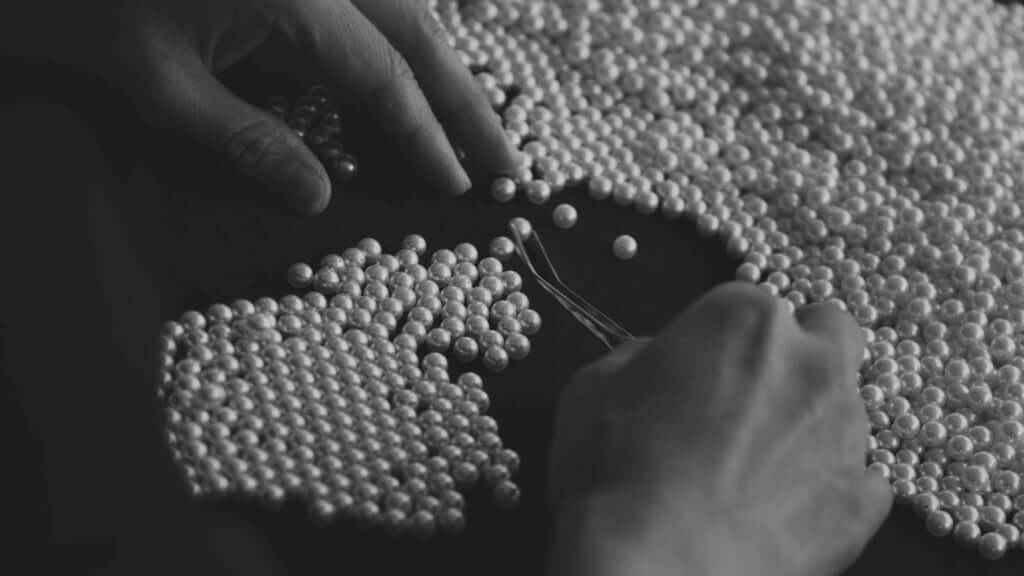
The pearl was perhaps humanity’s first jewel. ‘Of all the precious things on earth, the pearl is the one of highest value’, wrote Pliny the Elder, in Rome, in his Natural History. And at the end of the 13th century, Marco Polo, who travelled throughout Asia, declared in The Description of the World, or Book of Marvels: ‘In India and Cipangu, the waters yield magnificent pearls.’ Portraits of Marie-Antoinette almost always portray her wearing pearls, which tells us how much the Queen of France loved pearls.
Nicknamed ‘moon drops’ or ‘mermaids’ tears’, pearls have seduced, and continue to seduce, men (and even more so, women) around the whole world. They are formed inside living shellfish, and reveal their perfect gleaming beauty from the moment they are harvested: no need for polishing or cutting, as with diamonds or rubies, the mystery of the pearl is wholly due to its creation by nature, from which it drives its mysterious ‘presence’ and purity.
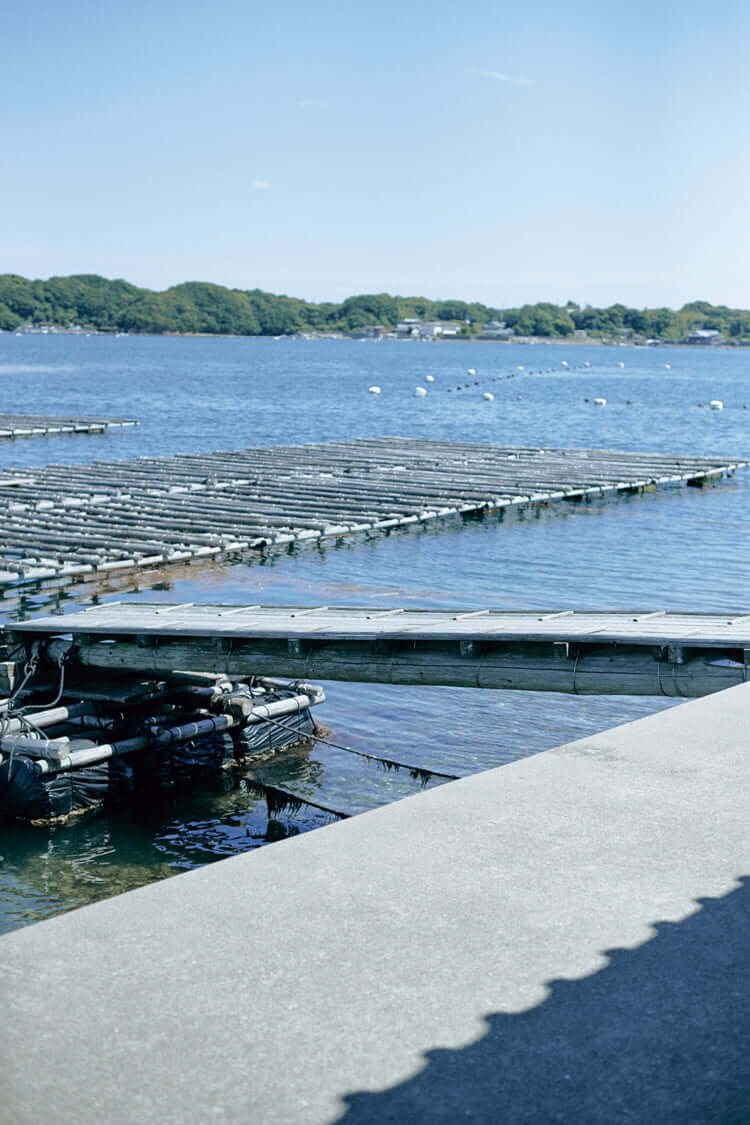
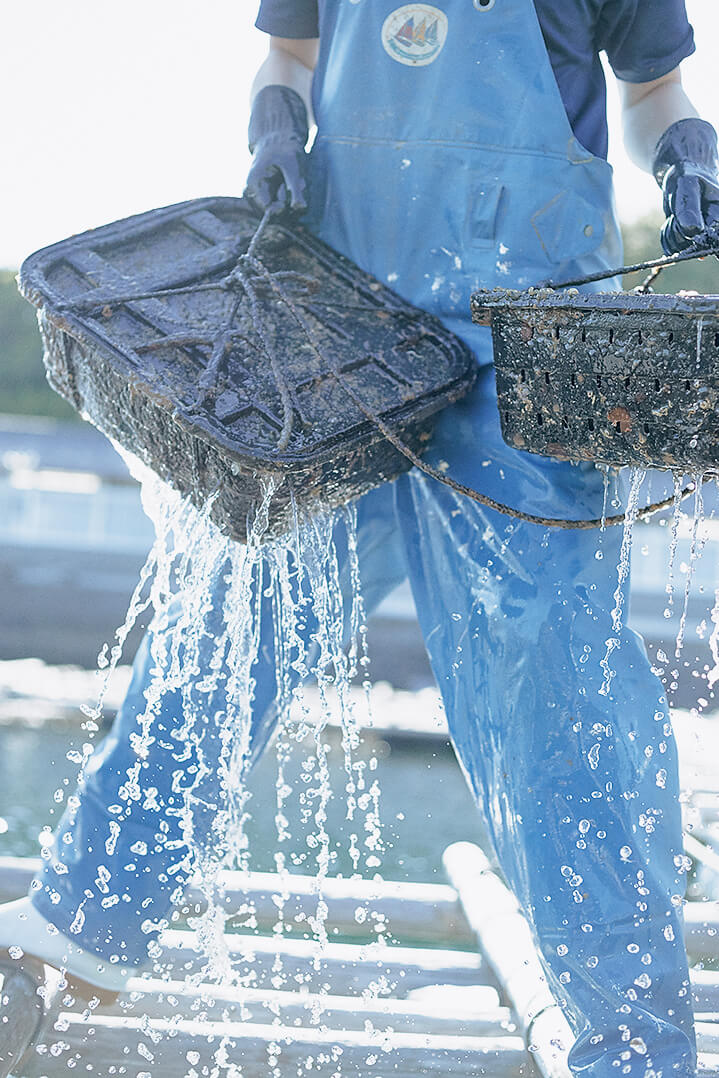
Under the floating rafts of the Mikimoto pearl farm in Tatoku, Akoya oysters are at work growing their pearls.
To put it slightly more objectively: created by a living creature, the pearl is the only gem of organic origin. From its organic nature, it acquires its characteristic colouring, whose radiance is enriched and enhanced as time goes by. Of all the gemstones, the pearl if the only one that matures the longer it’s worn, which is also part of its magic.
The seas and lakes around the world produce a rich variety of pearls with different characteristics: pearls from the South Seas are large, produced by the pinctada maxima oyster at the bottom of the South Pacific Ocean; black pearls, more precisely dark green, are produced by the black oyster in the seas near Tahiti; and pink pearls from conch shells of the Caribbean and Mexico… Japanese pearls are traditionally produced by the Akoya oyster (Pinctada fucata). They are usually no larger than 9 mm in size, which means they are relatively small gems, and are mainly white, though other subtle shades occur: pink, silver or cream. They are prized above all for their incomparable luminosity and unique elegance.
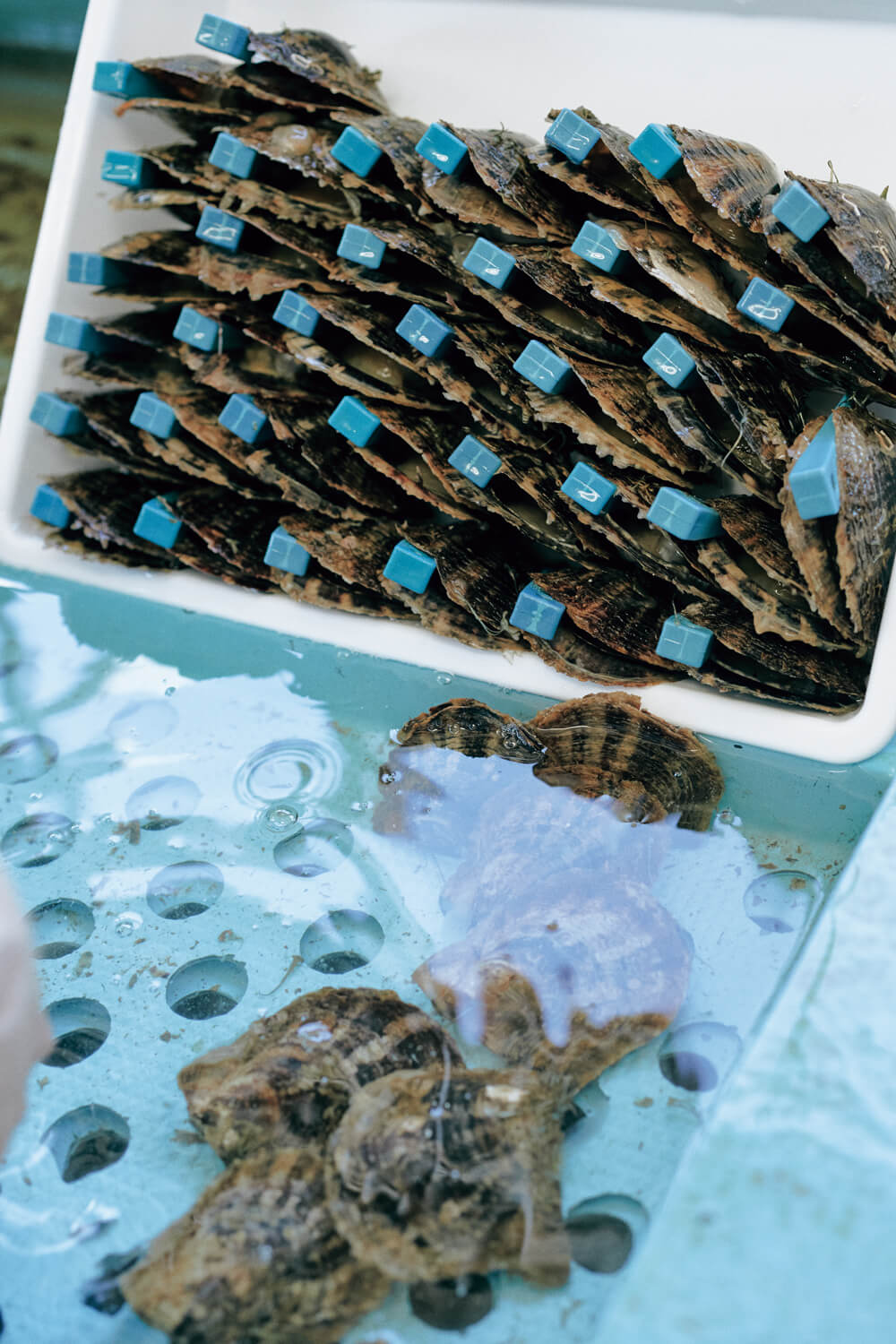
Akoya oysters waiting for their implants. Each oyster is numbered, so it’s completely traceable.
In the past, pearls were so rare and expensive that wearing pearl jewellery was the privilege of the upper classes, a symbol of wealth and power. In fact, natural pearls are really simple accidents of nature, and very few in number are harvested. Then, along came Kokichi Mikimoto, the founder of the Mikimoto enterprise. In 1893, Kokichi set himself a challenge: to create the first cultured pearl in the world. He was entirely successful, and due to his magical discovery, the pearl became a much more readily available jewel.
At that time, the region of his birth, Ise-shima, produced natural pearls from Akoya oysters, renowned for their colour and lustre. However, overfishing threatened the survival of the species. Kokichi began by increasing the number of oyster spats by growing Akoya larvae. Then he had an idea, ‘My dream is to adorn the necks of all the women around the world.’ He worked night and day to find a way to seed the oysters. His passion and entrepreneurial philosophy gave him the strength to overcome his failures, and to take the time that was needed for his efforts to finally pay off so he could achieve his aim of giving the world the perfect pearl… knowing that it takes a minimum of 4 years for each new-born larvae to form a pearl.
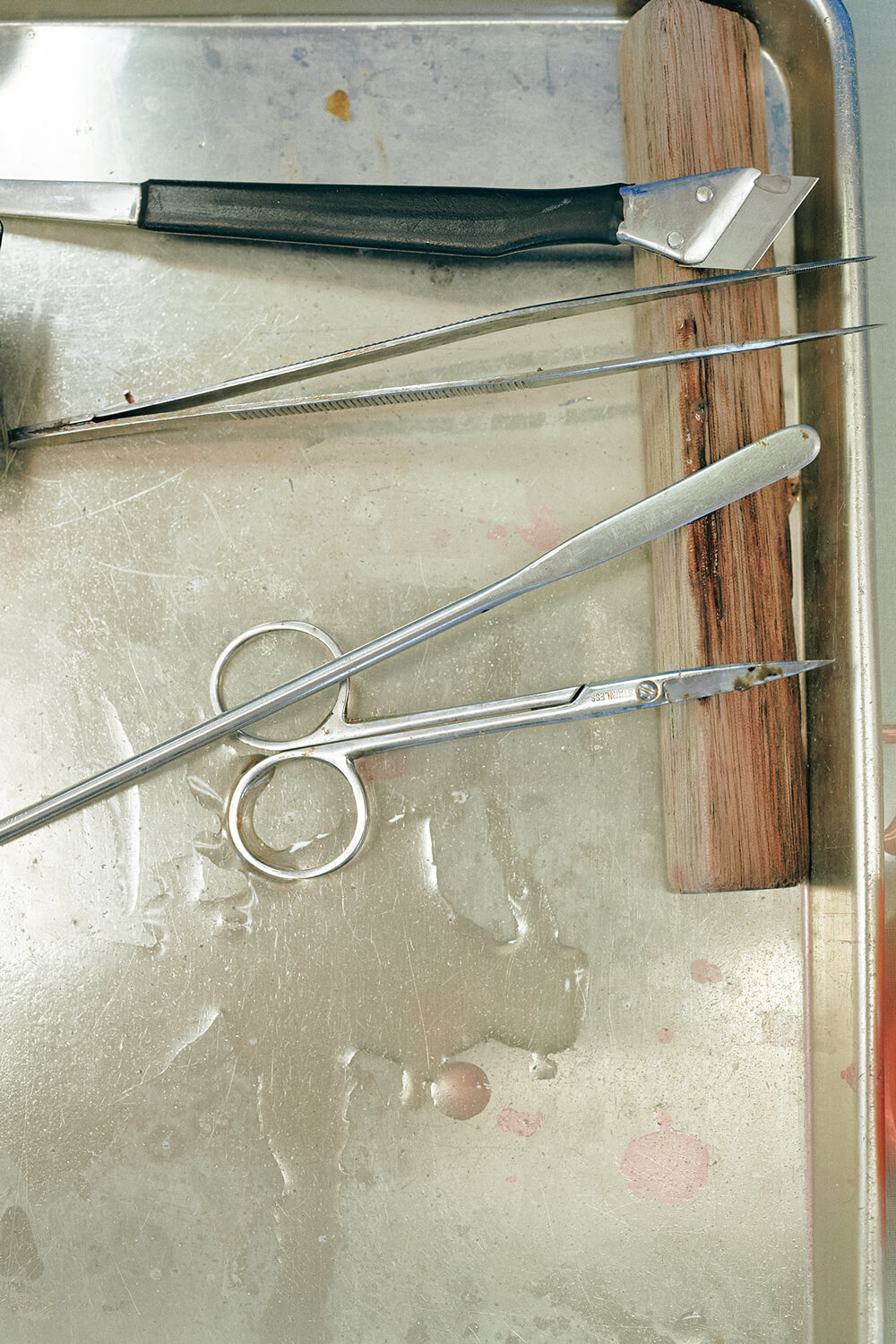
The grafting process is a precise surgical operation.
A natural pearl is formed when a fragment of the oyster mantle accidentally penetrates the mollusc shell, and the mantle secretes layer upon layer of nacre, thus creating a lustrous pearl. To cultivate a pearl, this chance occurrence must be artificially replicated. This consists of introducing a foreign body, specifically, a particle of shell from a freshwater bivalve mollusc, polished into a sphere, into the body of an Akoya oyster, at the same time as a small piece of mantle. This step is essential for the creation of a cultured pearl. It demands a high level of precision and technical skill in order to keep stress to a minimum for the recipient. As time passes, the foreign body gradually becomes covered with calcium carbonate around which the oyster secretes layers of nacre and protein, the same material that forms a pearl. The repetition of this process is what gives the pearl its beautiful colour and lustre.
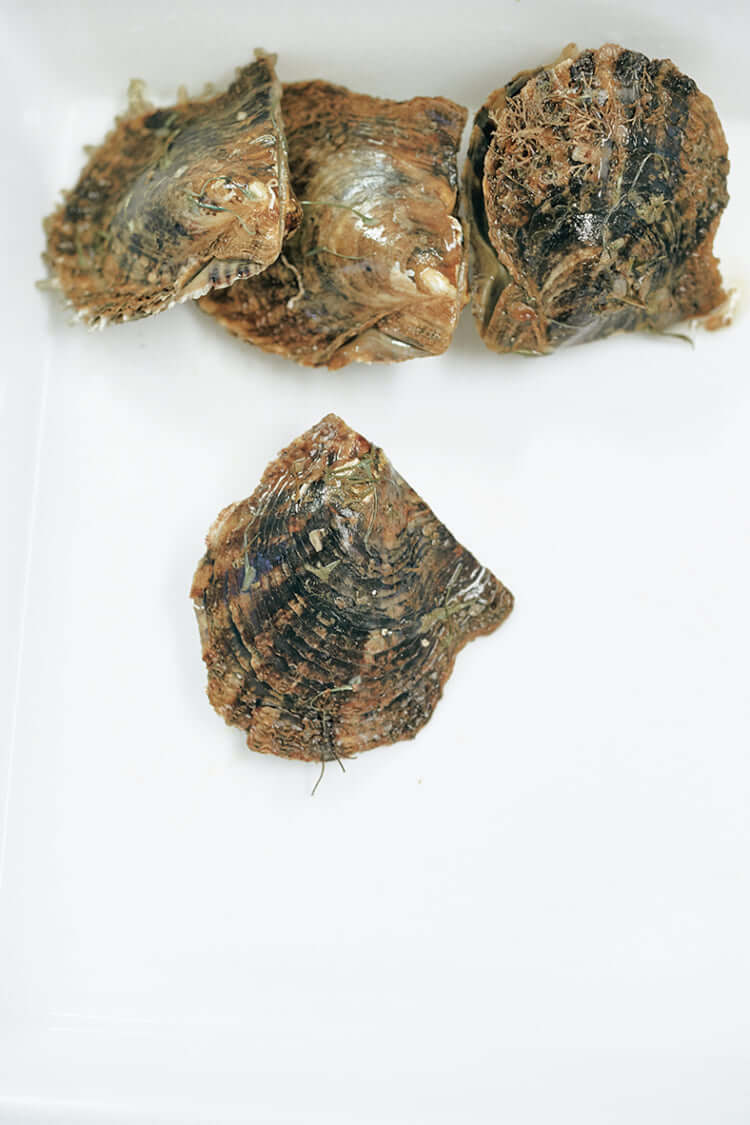
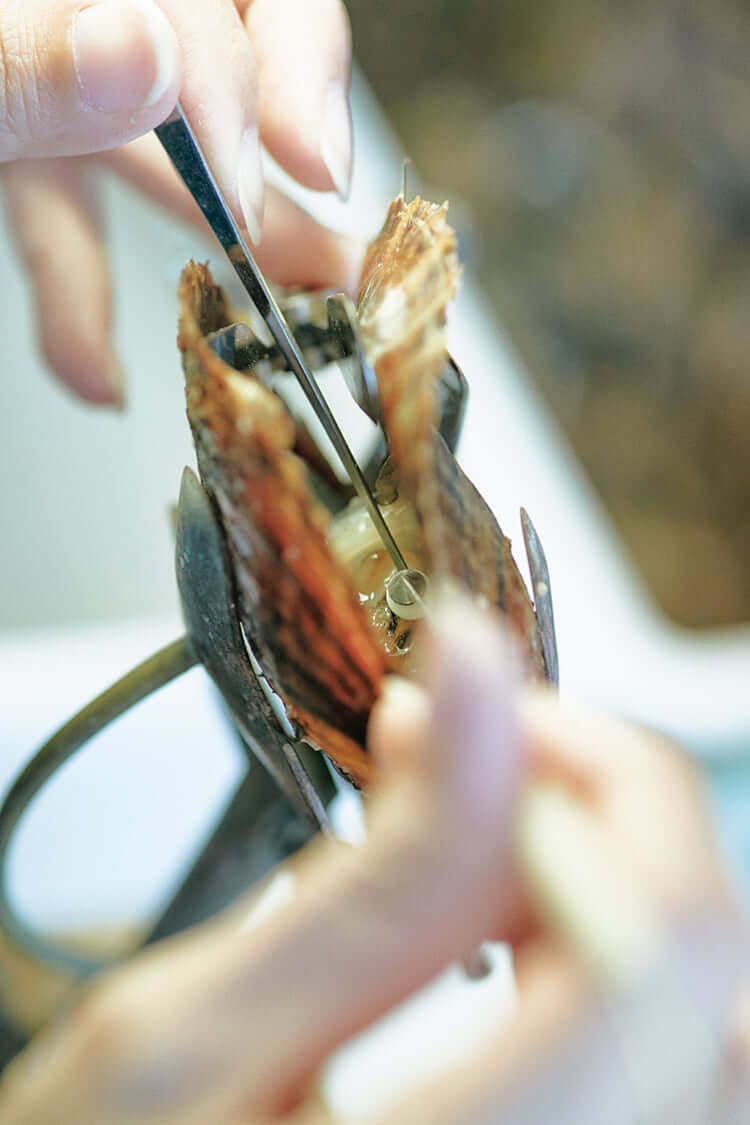
Left: Akoya oysters farmed in Ago Bay are small in size and can be held in the palm of the hand. Right: The implant. The incision with a scalpel and the very precise implantation of the graft in exactly the right place.
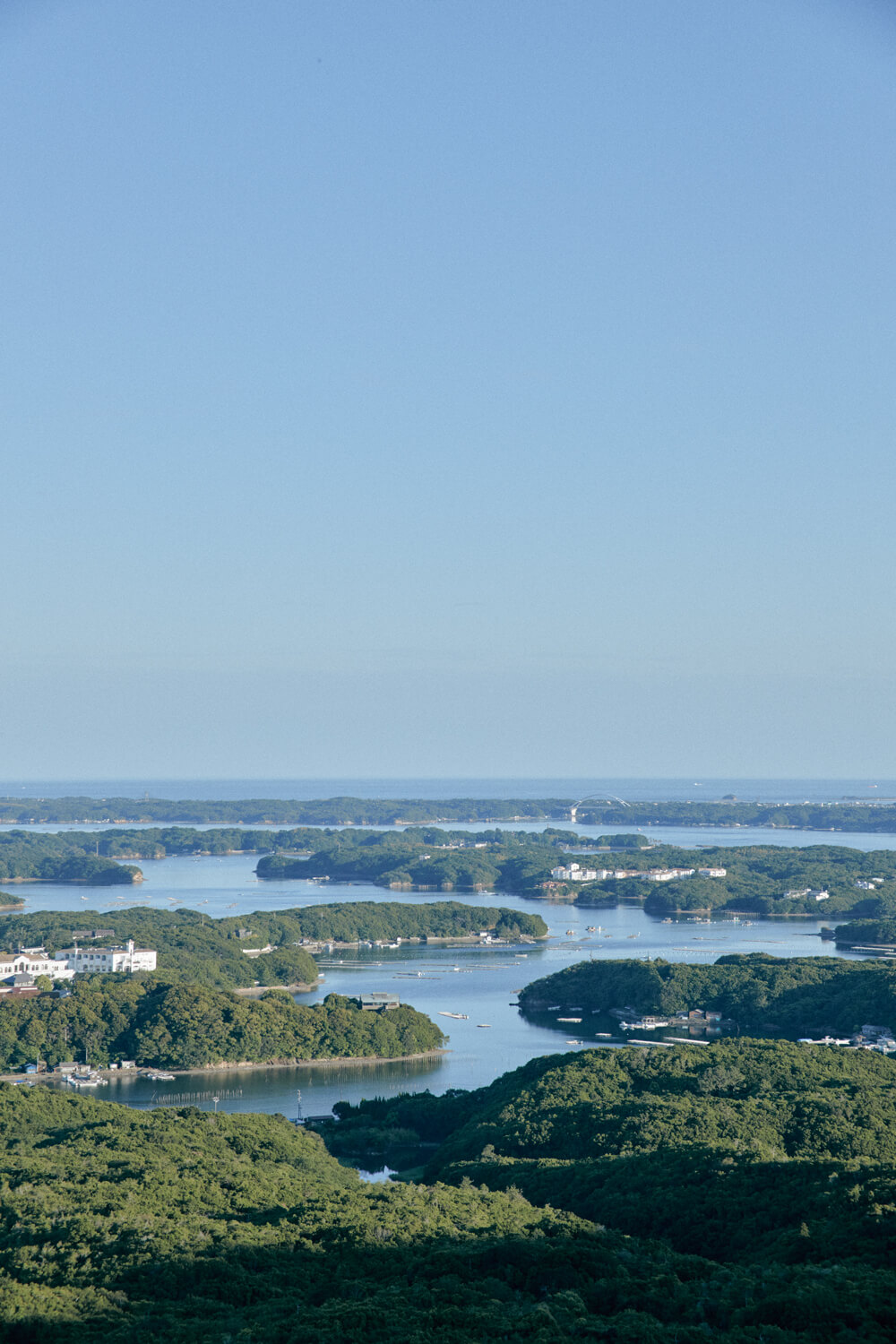
Ago Bay seen from Yokoyama Observatory. The wonderful contrast between the sea and the vegetation along this rugged coastline of inlets and islands dotted with islands.
The unique beauty of each pearl is determined by its size, colour, luminosity (called its ‘lustre’), and the depth of the nacre. Only pearls that fulfil the very stringent quality criteria laid down by the house of Mikimoto are permitted to carry the name ‘Mikimoto pearls’. But Mikimoto’s activities are not limited to pearl production: the Mikimoto brand is a rarity among jewellery houses in that it covers the whole journey of a jewel, from design, making, sales, through to after-sales service.
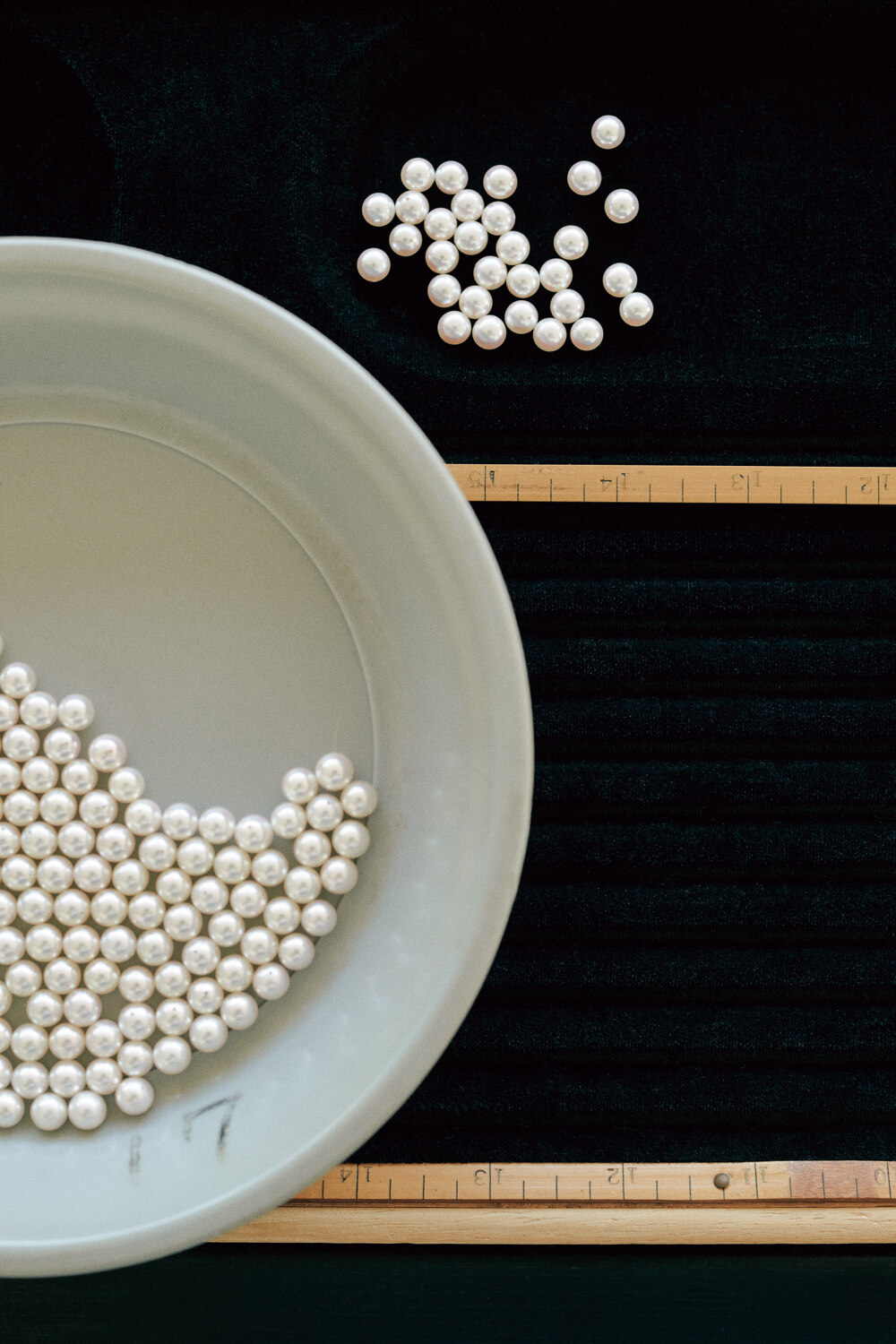
There are innumerable fascinating stories about Mikimoto. At the time he created his business, the Japanese jewellery market was entirely dependent on trends emanating from Europe, and imported jewellery. To train his jewellers in the techniques necessary to produce original creations, Mikimoto sent them to Europe. Then, in 1907, he founded the Mikimoto Jewellery Studio, which today is the Mikimoto Jewelry Mfg Co.,Ltd.
Mikimoto opened the first shop dedicated solely to selling pearls in 1899, on Ginza Avenue. With the aim of spreading the magic of pearl jewellery around the whole world, he took part in all the international exhibitions: Philadelphia 1926, Paris 1937, New York 1939, each time exhibiting pieces which have become famous. The exceptional beauty of the Mikimoto pearls, of course, but also their delicate settings, which more than equalled the techniques of foreign made jewellery, soon meant that the name of Mikimoto was on everyone’s lips.
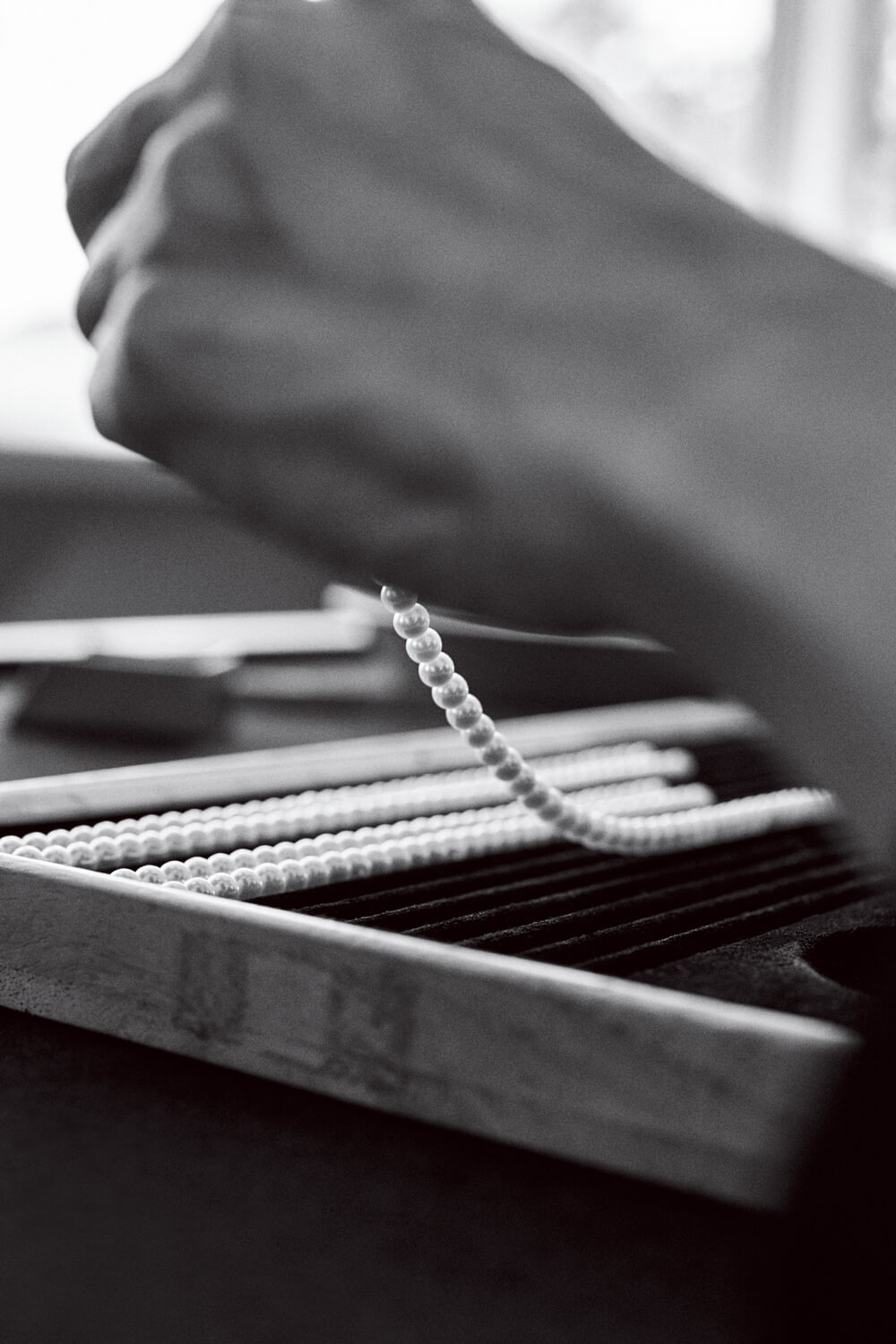
Perfectly identical pearls in size and colour are strung by hand by a skilled jeweller, before becoming a piece of jewellery.
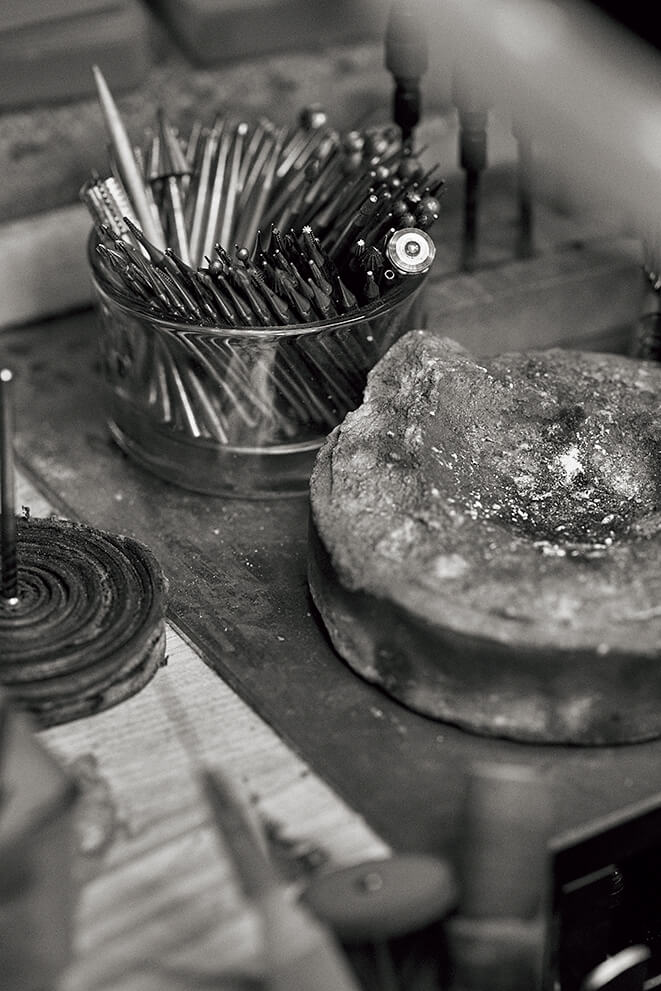
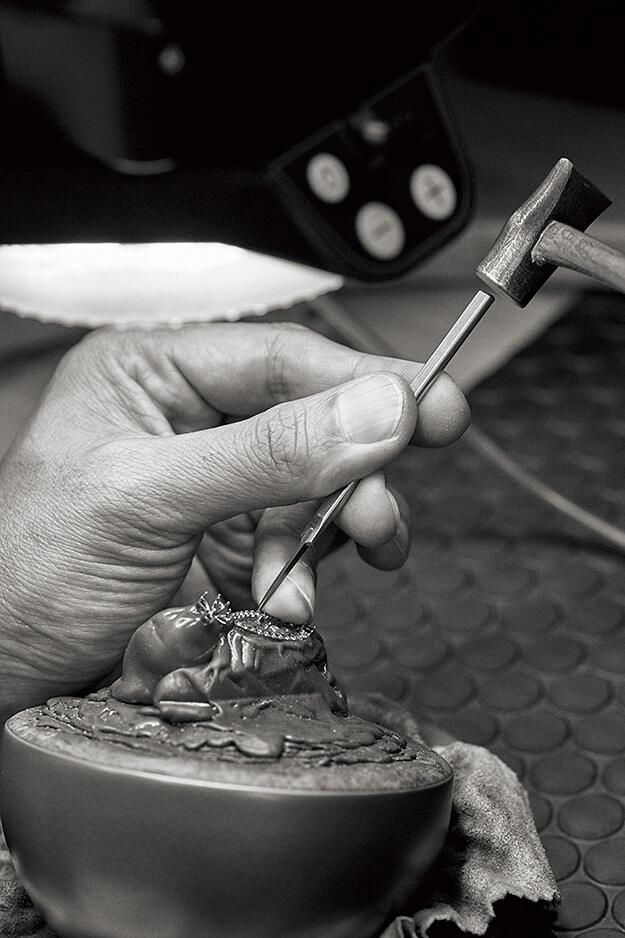
Mikimoto is renowned for its production of high-quality cultured pearls, but also for the excellence of its jewellery.
Today, as always, the Mikimoto quality relies on the know-how of skilled craftsmen to create the finest jewellery. Making an authentic Mikimoto necklace starts with the rigorous selection of the most beautiful ‘Mikimoto pearls’ according to their colour, whether pink or white. Next, the best facet of each pearl is chosen based on both its shape and colour, before it’s drilled with a special bit. The pearls are then aligned to within 0.5 mm in size, while the painstaking process of matching is continued, to ensure all the pearls possess the same lustre. This unusual level of precision is achieved solely by manual means: no advanced technology is able to reach this level of expertise. It takes human aesthetic sensibilities to recognize the subtle variations in beauty.
The pearl is born within a living creature, shines in the hands of a craftsman, and evolves in the company of the human-being who wears it. That’s why Mikimoto always insists on skilled manual know-how. It’s also the reason why Mikimoto pearls are so beloved.
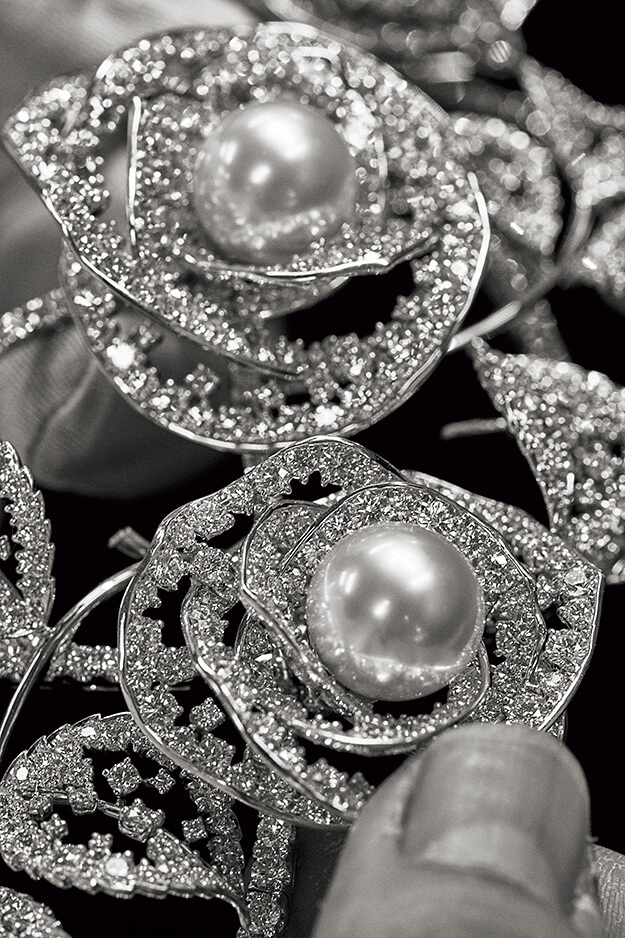
TRENDING
-
Ishiuchi Miyako, A Singular Perspective on Women
Recipient of the 2024 Women in Motion Award, the photographer creates intimate portraits of women through the objects they left behind.

-
Recipe for Ichiraku Ramen from ‘Naruto’ by Danielle Baghernejad
Taken from the popular manga with the character of the same name who loves ramen, this dish is named after the hero's favourite restaurant.

-
Namio Harukawa, Master of Japanese SM Art
'Garden of Domina' offers a dive into the world of an icon of ‘oshiri’, whose work has now reached a global audience.

-
The Tattoos that Marked the Criminals of the Edo Period
Traditional tattoos were strong signifiers; murderers had head tattoos, while theft might result in an arm tattoo.

-
The Emperor of Japanese Porn is Now the Star of a Netflix Series
Deliciously funny, The Naked Director especially succeeds in reviving the atmosphere that was so characteristic of 1980s Japan.





